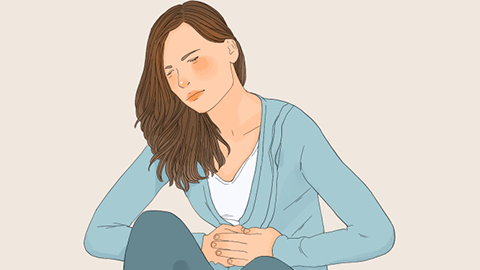What are the symptoms of adenomyosis?
Generally, as a benign lesion caused by endometrial invasion into the uterine muscle layer, adenomyosis mainly presents with symptoms including progressive dysmenorrhea, increased menstrual bleeding, prolonged menstrual periods, lower abdominal pressure, and uterine enlargement. A detailed analysis is as follows:

1. Progressive Dysmenorrhea: Patients develop gradually worsening dysmenorrhea, meaning the pain becomes more severe with each menstrual cycle. The pain often starts 1-2 days before menstruation begins, peaks during the first or second day of the period, and then gradually subsides. The pain is primarily located in the central lower abdomen and may radiate to the lower back, sacral area, and perineum. Severe pain may require analgesic medication for relief.
2. Increased Menstrual Bleeding: Menstrual flow becomes significantly heavier, sometimes dripping down the legs, and often contains large blood clots. This occurs because the enlarged uterus increases the surface area of the endometrium, and the ectopic endometrial tissue within the muscle layer affects uterine contraction, resulting in increased bleeding.
3. Prolonged Menstrual Periods: Normal menstrual periods typically last 3-7 days; however, in patients with adenomyosis, the duration may extend beyond 10 days. Menstrual bleeding may be prolonged and persistent throughout the menstrual cycle, with some patients experiencing light spotting even after the period ends.
4. Lower Abdominal Pressure: Patients often feel a sensation of pressure in the lower abdomen, particularly during menstruation. This may be accompanied by low back pain. The pressure and pain may worsen after physical exertion, prolonged standing, or sexual intercourse, and may ease slightly with rest but rarely disappear completely.
5. Uterine Enlargement: As the condition progresses, the uterus gradually enlarges and becomes firmer, typically showing uniform enlargement not exceeding the size of a 12-week pregnant uterus. Patients may feel the outline of the enlarged uterus in the abdomen, especially when the bladder is full. The enlarged uterus may compress surrounding tissues, potentially causing discomfort such as frequent urination.
If the above symptoms occur in daily life, individuals can alleviate discomfort by maintaining regular作息 (作息 translates as作息 here, but may be better omitted or adapted contextually), avoiding excessive fatigue, and keeping warm during menstruation. Regular gynecological examinations to monitor disease progression can also help implement appropriate measures to relieve symptoms.





